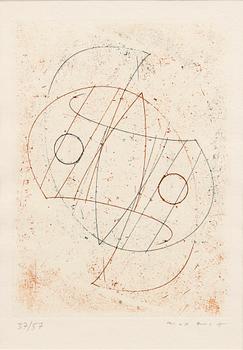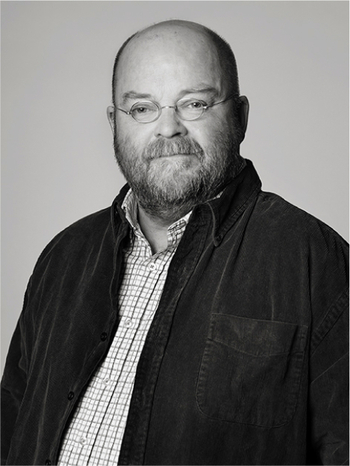Max Ernst
Max Ernst, "Obliques"
Etching signed and numbered 37/57, image area approx. 19x13.5 cm
Not examined out of frame.
Literature
Brusberg 120BP.
Spies-Leppien 114/B.
1967
Artist
Max Ernst is known one of the most important and innovative artists of the 20th century. Early in his career Ernst was bound to the Dada group in Köln and he later became a key figure amoungst the surrealist movement where he challenged the conventional boundaries for what constitutes art. Ernst painted instictively and primitively, almost like a shaman of modernism, whose creativity is infused with rituals and mysticism.
The development of his so-called frottage technique became particularly significant for Ernst's artistic work. This discovery occurred on a rainy day when Ernst found himself alone in a hotel room in Pornic, France year 1925. In his autobiographical notes (written in the third person) which were rendered in Moderna Museum's catalog alongside Max Ernst's extensive exhibition of 1969 he describes the moment : "To develop his ability for meditation and hallucination, he creates a number of drawings from the boards. Randomly, he lets pieces of paper fall to the floor and then rubs them with a pencil. As he observes the impressions, he is surprised by the sudden enhancement of his visionary abilities. His curiosity is piqued. He becomes delighted and attempts to consult all kinds of materials in the same way that he happens to come across—leaves with their veins, the frayed edges of burlap, the traces of a palette knife on a modern painting, rolled-out strings, and so forth. Such drawings (beyond painting), arising through a series of spontaneous suggestions and transmutations (like hypnagogic visions), lost the characteristics of the material used, such as wood, and took on the appearance of incredibly precise signs that likely revealed the original cause of an obsession or, nonetheless, produced a semblance of the cause."
The method gave Ernst a alltogether new method of expression to his art and thus became a source of new motifs for him. He completed a series of works on paper and a few years later he continued to develop the technique through his "grattage", a variant of frottage but executed as paintings. In these helay a thin layer of colour on a surface (such as canvas or paper) which he later placed ontop of the subject. With help of a palett knife, Ernst scraped awat the colour, which resulted in a new, unique image.
In the world of exhibitions, Ernst's most popular pieces were those portraying birds with human-like bodies or hands. They became symbols for freedom with supernatural properties. Ernst created an alterego, Lop Lop, the king of birds, who first appears in a series of paintings and collages at the end of the 1920s as visual representation of Ernst, a primitiv icon which bears the secrets to visionary freedom. Lop Lop's emergene can be linked back to a confusing occurance in his childhood, where his beloved parrot Hornebom died in correlation with his little sister Loni's birth. The young Max missunderstood his sister to be a reincarnation of his parrot. Based upon this story, Lop Lop is a mystical creature born via death, a singular emblem, a guide through the shadowy world of Ernst's inner psyche.
Read more


































